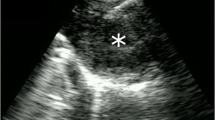Abstract
Non-small cell lung cancer is the leading cause for cancer incidence and mortality in European countries, accounting for about 21% of all cancer cases in men. In the United States, it is the leading cause of cancer mortality in men and women. Globally, lung cancer incidence is increasing at a rate of 0.5% per year. In very few countries, the incidence is declining due to the antismoking policy. The National Lung Screening Trial (NLST) was the most successful and promising trial for lung cancer screening and early diagnosis. It was concluded that annual low-dose spiral CT screening of high-risk participants was associated with a 20% mortality reduction. Early diagnosis, accurate staging, response evaluation, and follow-up studies are absolutely mandatory for this group of patients for cure or for better and longer life. Especially, staging is of paramount importance for the decision-making process. The rapid evolution in imaging techniques and the accumulated experience has introduced new promising standards for early diagnosis, staging, prediction of response, and follow-up for patients with lung cancer. Lung cancer is generally first imaged and often first detected by chest radiography. Computed tomography (CT) and occasionally magnetic resonance imaging (MRI) of the chest and upper abdomen are used to stage a known or suspected lung cancer. It is generally agreed that all patients with abnormal mediastinal lymph nodes at CT need further imaging with FDG-PET and probably lymph node biopsy. Therapy should not be planned based only on positive CT findings. The biopsy is done with either endoscopic ultrasound-guided fine-needle aspiration (EUS-FNA) or endobronchial ultrasound transbronchial needle aspiration (EBUS-TBNA) or both. In patients with normal biopsies with the above two methods, one may proceed with surgical mediastinoscopy only in those with abnormal mediastinum. The radiological follow-up of patients after treatment is not defined and is a matter of debate.
You have full access to this open access chapter, Download chapter PDF
Similar content being viewed by others
Keywords
1 Introduction
Lung cancer is the leading cause of cancer incidence and mortality in European countries, accounting for about 21% of all cancer cases in men. In the United States, it is the leading cause of cancer mortality in men and women. Globally, lung cancer incidence is increasing at a rate of 0.5% per year. In very few countries, the incidence is declining due to antismoking policy [1].
Lung cancer is divided into two major groups: non-small cell lung cancer (NSCLC) and small cell lung cancer (SCLC). In this chapter, we will deal only with NSCLC.
Patients with advanced disease who receive chemotherapy plus biological agents survive between 12 and 15 months. A small portion of patients, especially with targetable adenocarcinoma, who receive targeted agents, may live longer. Patients with localized non-operable stage treated with chemoradiotherapy may survive 16–22 months.
On the contrary, lung cancer patients with early operable disease can enjoy long life or even be cured.
Therefore, early diagnosis, accurate staging, response evaluation, and follow-up studies are absolutely mandatory for this group of patients for cure or for better and longer life. Especially, staging is of paramount importance for the decision-making process.
The rapid evolution in imaging techniques and the accumulated experience has introduced new promising standards for early diagnosis, staging, prediction of response, and follow-up for patients with lung cancer.
Reference
Brodowitz T, Ciuleanu T, Crawford J et al (2012) Third CECOG consensus on the systemic treatment of non-small cell lung cancer. Ann Oncol 23:1223–1229
Author information
Authors and Affiliations
Corresponding author
Editor information
Editors and Affiliations
Rights and permissions
Copyright information
© 2018 Springer International Publishing AG, part of Springer Nature
About this chapter
Cite this chapter
Kosmidis, P.A. (2018). Lung Cancer. In: Gouliamos, A., Andreou, J., Kosmidis, P. (eds) Imaging in Clinical Oncology. Springer, Cham. https://doi.org/10.1007/978-3-319-68873-2_28
Download citation
DOI: https://doi.org/10.1007/978-3-319-68873-2_28
Published:
Publisher Name: Springer, Cham
Print ISBN: 978-3-319-68872-5
Online ISBN: 978-3-319-68873-2
eBook Packages: MedicineMedicine (R0)




